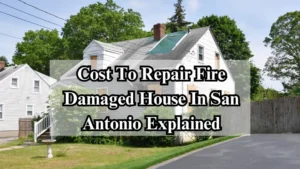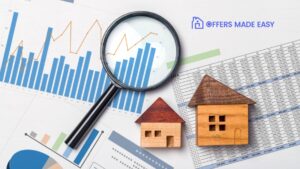Houses for sale in Texas offer a diverse range of options to suit any lifestyle. Make an informed decision with our comprehensive guide to finding your perfect home.
Overview of the Texas Real Estate Market
The Texas real estate market is one of the most dynamic and fastest growing in the United States. With its business-friendly policies, sunny climate, and low cost of living, Texas continues to see strong demand from home buyers.
Some key trends shaping the market include:
- Booming population growth, especially in major metro areas like Dallas-Fort Worth, Houston, Austin, and San Antonio. Texas added over 3.8 million new residents between 2010-2020. This influx of new residents is fueling housing demand.
- Record low inventory of homes for sale. As of January 2023, there were just 1.6 months of inventory available in Texas, driving bidding wars in many markets. Limited supply makes it very competitive for buyers.
- Rising home prices and faster appreciation rates compared to national averages. According to the Texas A&M Real Estate Center, the median home price in Texas was $315,000 as of December 2022, up 15% from the previous year.
- Strong job growth supporting the economy. Major employers like Tesla, Oracle, Samsung, and Amazon have been expanding operations in Texas, bringing high-paying jobs. This is increasing the pool of buyers able to purchase homes.
The most popular markets for home buyers include Austin, Dallas, Houston, San Antonio, and suburban areas like Plano, Frisco, Round Rock, and Sugar Land. Tech hubs like Austin have seen especially competitive bidding and soaring home prices.
Regional factors like job growth, availability of land, and local building costs impact prices significantly. Home prices tend to be highest in core urban areas and more affordable in secondary markets and rural areas. Understanding local market conditions is key for buyers and investors. Explore a wide range of houses for sale in Texas to find your perfect home.
Types of Homes Available in Texas
Texas offers a wide variety of housing options to meet the needs of homebuyers. Here are some of the most common types of homes found across the Lone Star State:
Single-Family Homes
The most popular housing type in Texas is the single-family home. Within this category, there are detached homes as well as attached home options like townhomes and condominiums.
Detached single-family homes offer complete privacy and independence. These stand-alone houses typically have a yard and do not share any walls with neighboring homes. Detached homes allow homeowners to customize and renovate their property however they wish.
Townhomes are attached rowhouses that share walls with one or more adjacent units. Townhomes offer an affordable ownership option and require less exterior maintenance than detached homes. They provide more privacy than condos and often include small yards or patios.
Condominiums, or condos, are individually owned apartment-style units within a larger multi-unit complex. Condo owners share common spaces and amenities. Condos require little exterior maintenance and offer security features like controlled access. Condos are popular in urban areas and offer a more affordable way to live in desirable locations.
New Construction
New construction homes make up a significant portion of houses for sale in many Texas markets. Buying a never-lived-in new build often allows buyers to customize floorplans and finishes to suit their needs. New homes come with warranties and the latest amenities. However, new construction can be more expensive and often requires waiting months for completion.
Foreclosures and Distressed Properties
Foreclosures and short sales present opportunities for bargain home buying in Texas. A foreclosure indicates the previous owner defaulted on their mortgage, resulting in the bank reclaiming the property. Short sales occur when an owner sells for less than the amount owed in order to avoid foreclosure. While distressed properties often require repairs, they can be purchased well below market value.
Finding the Right Home for Your Needs
Discover luxurious houses for sale in Texas with modern amenities. When looking for a home in Texas that fits your lifestyle and needs, there are several key factors to consider:
Search by Number of Bedrooms and Bathrooms
The number of bedrooms and bathrooms is one of the top criteria for most homebuyers. Consider how many bedrooms you need based on your family size and plans to grow. Master bedrooms with en-suite bathrooms are popular in newer homes. You’ll also want to factor in the number of full and half baths needed.
Filter by Desired Amenities
Texas homes often showcase amenities like pools, outdoor kitchens, and smart home technology. Make a list of your must-have amenities and nice-to-have features. Key amenities to look for include:
- Swimming pool
- Spa and hot tub
- Home gym or exercise room
- Media room or home theater
- Game room
- Workshop or shed
- Outdoor kitchen and living area
- Smart home technology
- Security system
- Attached or detached garage
Consider Property Types
Texas offers diverse housing styles to match your preferences. Property types to consider include:
- Single family home – detached, semi-detached, townhouse
- Ranch style – single-story, rambling layout
- Two-story home – expanded space with upstairs bedrooms
- Modern farmhouse – contemporary rustic design
- Luxury or designer home – high-end finishes and features
- Green built home – eco-friendly and sustainable
- Condo or apartment – shared amenities and less maintenance
Think about your ideal home layout, size, floor plan, and aesthetic when touring potential properties. This will help narrow your options to find your perfect home.
Popular Home Searches in Texas
Searching for affordable houses for sale in Texas has never been easier. Texas has diverse real estate markets across its major metro areas, leading to unique homebuyer preferences and trends in different cities and neighborhoods.
In Austin, many homebuyers are searching for properties in trendy neighborhoods close to the city center, nightlife, and tech job hubs. Popular ZIP codes include 78704 (South Lamar), 78751 (North Shoal Creek), and 78701 (Downtown Austin). New constructions in master-planned communities like Belterra and West Lake Hills are also in high demand. Families often target suburbs like Round Rock, Cedar Park, and Leander for their schools and amenities.
DFW is a sprawling metro, so home searches depend on lifestyle factors. Young professionals and singles favor Uptown and Downtown Dallas high-rises. Families seek Plano, Frisco, and Allen in Collin County or Southlake and Grapevine in Tarrant County. Executives choose Park Cities and Preston Hollow. The top DFW ZIP codes are 75201 (Uptown Dallas), 75034 (Plano), and 75225 (University Park/Preston Hollow).
In Houston, Inner Loop neighborhoods near Downtown and the Medical Center like Montrose, Rice Military, and Museum District are popular. Outer Loop areas in Sugar Land, The Woodlands, and Pearland appeal to families. New home construction thrives in master-planned communities like Cinco Ranch, Sienna Plantation, and Riverstone. Top ZIP codes are 77006 (Washington Ave), 77005 (Montrose), and 77024 (River Oaks).
The Hill Country attracts those seeking beautiful scenery and outdoor recreation. Boerne, Fredericksburg, and Bandera are quaint towns with charm. In San Antonio, Alamo Heights, Dominion, and Stone Oak neighborhoods see high demand. New Braunfels and Canyon Lake appeal to water lovers.
Throughout Texas, homebuyers value good schools, amenities, reasonable commutes, and communities matching their lifestyle. Knowing local trends helps match buyers and sellers effectively.
Exploring Nearby Areas and Home Values
Make your dream a reality with amazing houses for sale in Texas. Texas has diverse real estate markets across its major metropolitan areas and smaller cities. Home prices can vary significantly between neighborhoods and ZIP codes based on location, amenities, school districts, and more.
Some of the most expensive areas for real estate in Texas include central Austin, University Park near Dallas, The Woodlands outside Houston, and Alamo Heights in San Antonio. Median home prices in these affluent neighborhoods range from $500,000 to over $1 million. Proximity to tech employers, top-ranked schools, luxury shopping and dining all contribute to the premium prices.
More affordable options exist in Texas too. Cities like Killeen, Brownsville, Lubbock, and El Paso have median home prices between $150,000-$250,000. Buyers get more square footage for their dollar compared to the major metro areas.
Suburbs on the outskirts of major cities offer a balance of lower prices with reasonable access to jobs and activities. For example, median home prices in Arlington near Dallas are around $300,000 compared to $600,000 in central Dallas neighborhoods.
New home construction also influences prices. Areas with more new construction, like Frisco north of Dallas or Leander outside Austin, benefit from increased housing supply. This keeps prices lower compared to established neighborhoods with less turnover.
School district quality heavily impacts home values too. Cities and neighborhoods zoned to top-ranked schools have higher demand and prices. For example, Southlake outside Dallas is one of Texas’ best school districts and median home prices exceed $750,000. Just 15 minutes away, prices in Keller drop below $400,000 with lower-ranked schools.
When exploring areas to live in Texas, consider the tradeoffs between location, home prices, and amenities. Find stunning houses for sale in Texas with spacious backyards.
The Home Buying Process in Texas
Purchasing a home in Texas is an exciting process, but it can also feel overwhelming for first-time homebuyers. Here is a step-by-step guide to make the home buying process smooth and stress-free.
1. Get Pre-Approved for a Mortgage
The first step is to get pre-approved for a mortgage by a lender. This allows you to know your budget and price range when looking at homes. Provide documents like bank statements, tax returns, and pay stubs to give lenders a clear picture of your finances. Shop around with multiple lenders to find the best rates and loan terms.
2. Research Homes for Sale
Once pre-approved, start researching homes for sale in your desired areas. Drive around neighborhoods you like and look online at real estate sites like Zillow, Trulia, and Realtor.com. Make a list of must-have features and your maximum budget. Attend open houses and schedule tours of homes you’re interested in.
3. Make an Offer
When you find the perfect home, make an offer through your real estate agent. The offer will include the purchase price, desired closing date, and any contingencies. Expect some negotiation on the offer price and terms. Once an offer is accepted, you’ll sign a purchase agreement.
4. Inspect the Home
After an accepted offer, schedule a professional home inspection to identify any issues with the property. You can request repairs from the seller based on inspection findings. Make sure all inspections are completed before the contingency period expires.
5. Secure a Mortgage
With an accepted offer, you can now finalize mortgage approval. Provide updated documentation to your lender. Lock in an interest rate once you are ready to close. Your lender will handle the paperwork and underwriting.
6. Close on the Home
During closing, you’ll sign all final paperwork and documents. This includes the mortgage, deed, and other legal items. Bring your down payment and closing costs. Once complete, you’ll get the keys and officially own your new home!
Work with a Real Estate Agent
The best deals on houses for sale in Texas are just a click away. Working with a licensed real estate agent when buying a home in Texas is highly recommended. They will guide you through the entire process, from making offers to closing. Real estate agents have access to MLS listings and critical market knowledge. There are different types of real estate professionals:
- Real estate agents work under a managing broker and must be sponsored to participate in MLS. Agents provide many services to buyers and sellers.
- Brokers have a broker’s license and can operate independently. They can hire real estate agents and sponsor them on MLS.
- REALTORS® are members of the National Association of REALTORS® and must follow their code of ethics. Not all agents are REALTORS®.
When interviewing agents, ask about their experience, typical clientele, neighborhoods they work in, and consultative approach. Look for someone you trust and feel comfortable with. They’ll help you negotiate and navigate the Texas real estate market.
Financing Your Texas Home Purchase
Financing a home purchase in Texas can seem daunting, but having a good understanding of your options will make the process smoother. There are various loan programs and creative financing options to explore based on your financial situation.
Mortgage Rates in Texas
Mortgage rates in Texas tend to be competitive with national averages. As of January 2023, the average 30-year fixed mortgage rate in Texas was around 6.5%, while 15-year fixed rates averaged approximately 5.5%. Adjustable rate mortgages in Texas averaged around 5.25% for a 5/1 ARM.
Rates can vary among different lenders and regions in Texas, so it pays to shop around. Working with an experienced loan officer can help you secure the most favorable interest rate based on your credit score, income, debt levels and down payment amount.
Government-backed loans from FHA, VA, and USDA remain popular options in Texas thanks to low down payment requirements. Conventional loans with only 3-5% down are also available from certain lenders.
Home Affordability Calculators
With rising home prices in many Texas markets, affordability is top of mind for buyers. Online calculators can provide estimates of how much house you can afford based on factors like income, debts, down payment, taxes and insurance.
Bankrate and NerdWallet offer user-friendly affordability calculators. You simply plug in your financial details and it will estimate your price range. The Texas Real Estate Commission website also has a Texas-specific calculator.
Pre-qualification from a lender is wise to determine your actual mortgage amount and better target your search. This involves allowing a lender to check your credit and income to issue a pre-approval letter for a loan amount.
Financing Tips for First-Time & Veteran Home Buyers
Get expert advice on purchasing houses for sale in Texas today. First-time home buyers may benefit from Texas’ state-run home loan programs, including the My First Texas Home program which offers down payment assistance and lower interest rates.
Veteran buyers can use their VA home loan benefit to purchase with no down payment required. USDA loans are another zero-down option for eligible borrowers in rural areas.
Down payment assistance programs through employers, banks or non-profits can help buyers needing help with the down payment. Gift funds from family can also be used.
Working to improve your credit score and reducing debt are key steps all buyers should take early on. Shopping lenders, getting pre-qualified, and understanding all your financing options will lead to success when you’re ready to buy.
Selling Your Texas Home
Selling a home in Texas can be a smooth process with the right preparation and guidance. Here are some tips for getting your home ready for sale, pricing it competitively, and finding the best real estate agent to represent you:
Preparing Your Home for Sale
Make minor repairs – Fix any leaky faucets, broken fixtures, cracks in walls, etc. These small fixes make a big difference.
Declutter and clean – Remove excess furniture and personal items so buyers can imagine themselves living there. Clean thoroughly inside and out.
Stage your home – Reposition furniture to highlight the best features and flow of the home. Remove dated decor.
Improve curb appeal – Tend to the lawn, trim bushes, power wash siding, freshen up landscaping at the front entrance.
Update and paint – A fresh coat of neutral paint can modernize a home. Replace outdated fixtures as needed.
Pricing Strategies and Home Valuation
Research recent sales – Look at similar homes that have sold in your neighborhood to gauge market value. Consider square footage, amenities, condition.
Get a comparative market analysis – Hire a real estate agent to assess your home’s value by comparing it to comps in the area.
Price it right – Price competitively based on market value, not emotional attachment. Overpricing will limit interest.
Consider an appraisal – Get an objective third-party appraisal to determine fair market value if you need validation.
Adjust as needed – Monitor showings and feedback, and be willing to adjust price if there is low interest after a few weeks.
Marketing Your Home and Working with Agents
Hire a listing agent – They will market to buyers’ agents and ensure maximum exposure for your listing.
Photography – Invest in professional photos that showcase your home in the best possible light.
List on MLS – Gain the most exposure by having your home listed in the Multiple Listing Service database.
Market online – In addition to MLS, your home should be advertised on real estate sites like Zillow, Realtor.com, etc.
Stage open houses – Open houses create excitement and a sense of urgency for serious buyers.
Leverage your agent’s network – Your agent should tap into their sphere of influence and connections to find potential buyers.
Be flexible – Understand that selling any home takes patience. Keep an open mind throughout the process.
Renting vs. Buying in Texas
Renting and buying both have their advantages in Texas, depending on your lifestyle, financial situation, and future plans. Here are some key factors to weigh when deciding between renting vs. buying in the Lone Star State:
Pros of Renting
- More flexibility to relocate for jobs or move to different neighborhoods
- Lower monthly costs than mortgage payments in many areas
- Avoid maintenance and repair responsibilities and costs
- No down payment or closing costs required to move in
Cons of Renting
- No long-term asset or equity being built
- Potential for rent increases year-over-year
- Subject to landlord rules and lease terms
- No control over renovations or changes to the property
Pros of Buying
- Build equity in your home that can grow over time
- Capitalize on appreciation in property values
- Customize your home and make renovations as desired
- Potential tax deductions for mortgage interest and property taxes
Cons of Buying
- Higher monthly costs than renting in many cases
- Large down payment required along with closing costs
- Responsible for all home maintenance and repairs
- Difficulty moving quickly if circumstances change
Rental Market Trends
Texas has a robust rental market, especially in major metro areas. Average rents have been steadily rising across popular cities like Austin, Dallas, Houston and San Antonio. Vacancy rates have tightened in recent years, indicating strong tenant demand.
Renter Resources
There are many online tools and services to aid renters in Texas, such as:
- Rental listing sites like Zillow, Trulia and HotPads to search available rentals
- Rent affordability calculators to estimate budgets
- Renter’s insurance guides and quotes
- Moving checklists and relocation tips
- Tenant rights and leasing resources
Deciding Between Renting and Buying
When deciding, consider factors like your income, career plans, family size, lifestyle needs, and financial goals. Renting tends to make sense for shorter-term stays, while buying has more benefits long-term. Calculate total monthly costs for renting vs. owning to make an informed decision based on your situation. Don’t miss out on beautiful houses for sale in Texas in prime locations.
Moving to Texas: Tips and Resources
Texas is a popular destination for people moving from other states, offering a strong job market, affordable cost of living, and great quality of life. If you’re considering a move to the Lone Star State, here are some tips and resources:
Relocation Guides
Many major Texas cities have relocation guides available to help new residents. These provide overviews of each city, highlighting key neighborhoods, attractions, schools, and more.
Cost of Living Comparisons
Texas has a very affordable cost of living compared to many other states. Use cost of living calculators to compare expenses between your current location and potential cities in Texas.
Local Community Information
Once you’ve narrowed down locations, get to know the communities and neighborhoods. Resources include:
- Local city and town websites – Provide information on events, parks, schools and local services.
- Community Facebook groups – Join local groups to connect with residents.
- Nextdoor app – Browse area news and recommendations from neighbors.
- Local subreddits – Read about happenings and ask questions of fellow Redditors.
- Local blogs – Many towns have blogs covering news, events, businesses and lifestyle topics.
Immersing yourself in the local community will help you get up to speed quickly in your new Texas home. With some research and planning, the moving process doesn’t have to be daunting.









